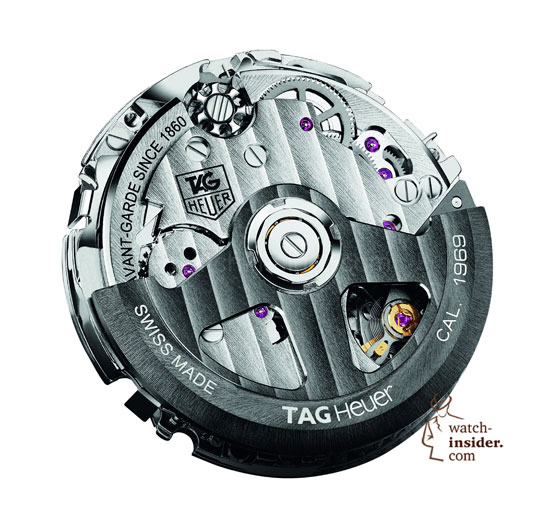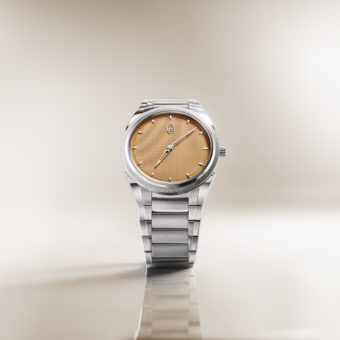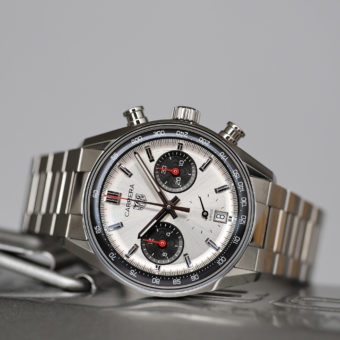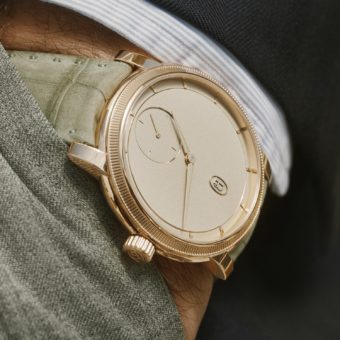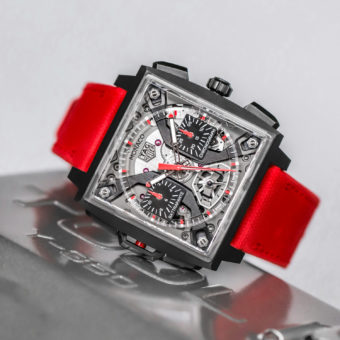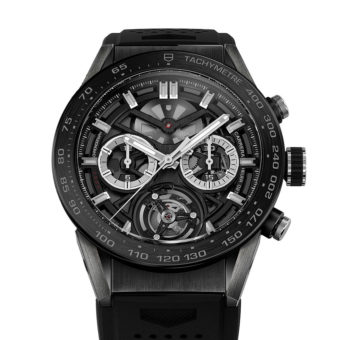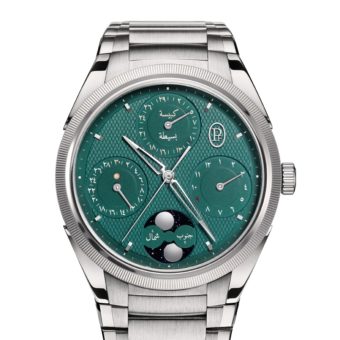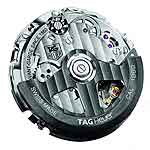
In 2009, TAG Heuer launched Caliber 1887, based — as you may know by now — on an old Seiko chronograph movement (and made its debut in the TAG Heuer Carrera 1887; click here for WatchTime’s test of that watch). It had been partially re-engineered by TAG Heuer and then produced by TAG in Switzerland. The integrated, self-winding, column-wheel chronograph movement is outfitted with a contemporary version of the brand’s 1887-patented oscillating pinion. TAG Heuer invested 20 million Swiss Francs to produce it in the volume that the company’s accelerating growth required, and an entire dedicated workshop had to be constructed at TAG Heuer’s facilities in La Chaux-de-Fonds, Switzerland. The first Calibre 1887 rolled off the workshop’s semi-automatic assembly line in 2010. To date, 130,000 have been produced.
Now, the brand is taking the next step by industrializing its first 100% in-house-manufactured chronograph movement. The ambitious goal is to double TAG Heuer’s movement-manufacturing capacity and to make the company to the number one chronograph-movement manufacturer among watch brands in Switzerland.
The total expenditure for the new project was another 20 million Swiss Francs, and the total volume planned is 500 pieces for 2013, to rise to 5,000 pieces in 2014.
TAG Heuer states that the quality of its manufacture movement is the direct result of key lessons learned in the production of its Caliber 1887 and in the design and production of several other award-winning, haute horlogerie movements.

Here are some of the new caliber’s technical specs: Vertical-clutch system; 28,800 vph (4 Hz); 70-hour power reserve; a difference in time adjustment after 24 hours of -4 to +6 seconds. This very thin movement (only 6.5 mm) houses 233 Swiss-made components.
The assortment is delivered by Atokalpa, belonging to Switzerland’s Parmigiani Group, as is the four-spoked balance, which is KIF auto-shock adjusted.
The dial’s counter layout, like the original Calibre 11, is classic “tri-compax”: central chronograph hand with chronograph minutes at 3 o’clock, chronograph hours at 9 o’clock, and small seconds at 6 o’clock.
Caliber 1969 also features a date window at 9 o’clock. The decorations include côtes de Genève and snailing on the black, tungsten oscillating weight and the minute and automatic bridges, which are nickel-plated and angle polished, with shiny beveled edges. The bridges, plates and ébauches (the incomplete watch-movement) are all produced at Chevenez in the Swiss Jura.
By adding both Caliber 1887 and Caliber 1969 to its manufacturing capacity, TAG Heuer ensures itself steady growth as a producer of chronograph watches. The combined production volume of the two movements will surpass 50,000 units in 2013 and is intended to reach a projected target capacity of 100,000 by 2016.
Why is this significant? It establishes TAG Heuer as one of the biggest industrial chronograph producers among all the Swiss watch brands, and one of the very few Swiss watch companies capable of producing nearly all of its own major components — not just movements but also dials and cases. Scroll down below to see photos of the new TAG Heuer facility in Chevenez.






